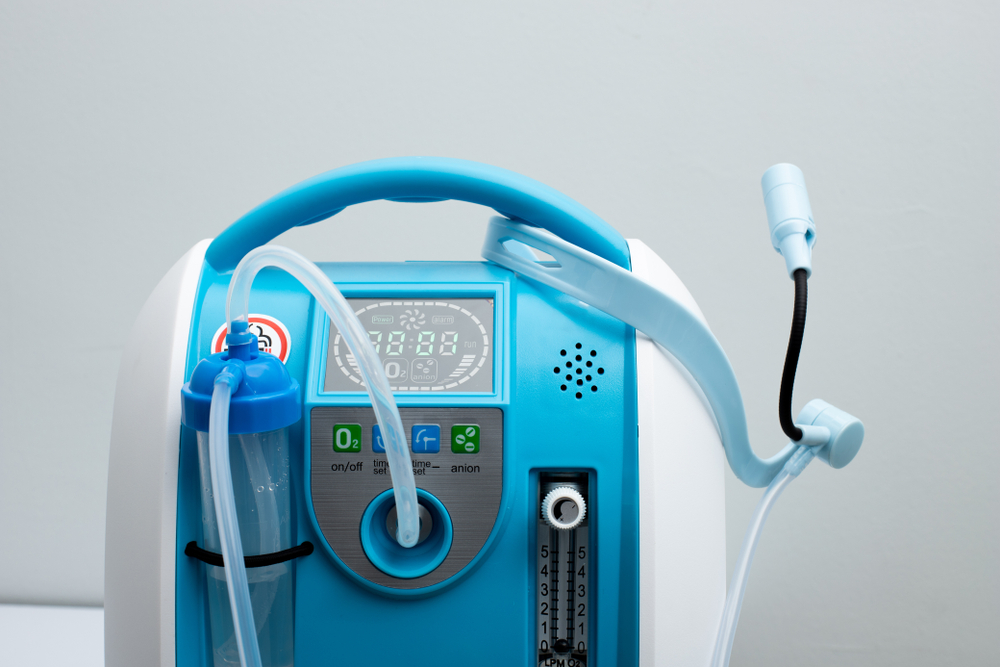When breathing becomes difficult, everything becomes difficult. Previously, those suffering from breathing problems as a result of not being able get enough oxygen used oxygen tanks. These were very hard to move and limited sufferer’s daily routines down to the very basics. Fortunately, new innovations in portable oxygen concentrators have changed everything. Now, those who need oxygen can take advantage of their many benefits and increasingly affordable price.

What Is A Portable Oxygen Concentrator?
A portable oxygen concentrator is a device that takes oxygen from the air, cleans and filters it and then stores it in a reserve tank ready for you to use. The concentrator uses a compressor to move air to a part of the machine called a sieve bed that then fills up with concentrated oxygen above 90 percent and gets fed to the user via a facemask. Settings can be adjusted for the amount and strength of the oxygen flow.
The concentrators are lightweight and portable and are especially good for those suffering from shortness of breath, chronic respiratory problems and acute respiratory conditions like Chronic Obstructive Pulmonary Disease (COPD).¹
More About COPD
COPD is a very serious condition which is the third biggest cause of death in the United States and affects over 12 million Americans, with 12 million more believed to already have COPD but not yet have been diagnosed. COPD leads to not getting enough oxygen as the lungs get blocked and steadily gets worse as time goes on.
A portable oxygen generator can be an enormous help to an individual suffering from COPD, since it does not need to be refilled, weighs less than five pounds and can be carried around in a backpack with batteries that last a day. They can also be plugged in and charged wherever you are going.
How Much Will A Portable Oxygen Concentrator Cost Me?
The short answer is minimum $2,100 ranging up to around $3,000. The price reflects a number of things including how good the battery is, the strength of the machine in terms of its liters per minute (LPM) and its noise amount. Some portable oxygen concentrators can be quite loud, so it is a good thing to find out before plugging it in and being deluged with a wall of noise or trying to relax at the coffee shop and disturbing other patrons.²
Pulse or Flow?
Portable oxygen concentrators come in two types: pulse or flow.³ Flow machines deliver an ongoing stream of oxygen and are compatible for those who use BiPAP machines and deliver up to 5 liters per minute, while pulse machines deliver up to 2 liters per minute. It is not always necessary to choose between one or the other, however, as some varieties of portable oxygen concentrators offer both settings on the same machine.⁴
Getting Around Without The Hassle
The lightweight design of many portable oxygen concentrators and the fact that the Federal Aviation Administration allows them to be brought on flights—but does not allow liquid or full oxygen tanks—makes getting around more convenient than ever.⁵ Another added benefit is that with more oxygen you may be able to get back into your exercise regimen with added energy and endurance. Just check with your doctor on this one first.
More About Portable Oxygen Concentrators
It’s always a good idea to look around and do research on your own and inquire with medical professionals, but portable oxygen concentrators are definitely worth considering if you have breathing challenges. In some cases they can even be covered by health insurance or Medicare. In fact, some people will qualify for renting a portable oxygen concentrator instead of buying it and the rental fee will be reimbursed by Medicare, so it can be a good idea to contact them to find out more.⁶
Looking online is the best way to find exclusive deals and read reviews of the various portable oxygen concentrators, comparing them and concluding which is the best for you. By the way, don’t forget to recycle your old oxygen tanks!⁷
[1] https://www.webmd.com/lung/copd/copd-portable-oxygen-therapy
[2] https://www.theseniorlist.com/portable-oxygen-concentrator/best/cheap/
[3] https://traveloxygen.com/technical-blog/difference-between-pulse-and-continuous-flow-oxygen/
[4] https://www.portableoxygenconcentratornews.org/2013/06/a-guide-to-understanding-pulse-flow-settings-on-portable-oxygen-concentrators/
[5] https://www.uptodate.com/contents/supplemental-oxygen-on-commercial-airlines-beyond-the-basics
[6] https://aeroflowinc.com/portable-oxygen-concentrator-is-it-covered-by-medicare/
[7] https://www.aedsuperstore.com/blogs/what-to-do-with-your-old-oxygen-tanks/


